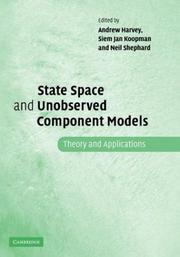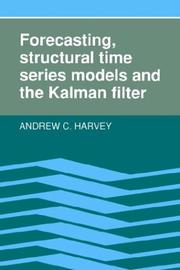| Listing 1 - 8 of 8 |
Sort by
|
Book
Abstract | Keywords | Export | Availability | Bookmark
 Loading...
Loading...Choose an application
- Reference Manager
- EndNote
- RefWorks (Direct export to RefWorks)
A vector autoregression model with time-varying coefficients is used to examine the evolution of wage cyclicality in four Latin American economies: Brazil, Chile, Colombia and Mexico, during the period 1980-2010. Wages are highly pro-cyclical in all countries up to the mid-1990s except in Chile. Wage cyclicality declines thereafter, especially in Brazil and Colombia. This decline in wage cyclicality is in accordance with declining real-wage flexibility in a low-inflation environment. Controlling for compositional effects caused by changes in labor force participation along the business cycle does not alter these results.
Bayesian Estimation --- Downward Wage Rigidity --- Economic Theory & Research --- Environment --- Environmental Economics & Policies --- Governance --- Indexation --- Labor Markets --- Labor Policies --- Macroeconomics and Economic Growth --- Real Wage Cyclicality --- Social Protections and Labor --- Time Varying Coefficients --- Vector Autoregression --- Youth & Governance

ISBN: 0792337719 9048146305 940158611X 9780792337713 Year: 1996 Volume: 32 Publisher: Dordrecht Kluwer
Abstract | Keywords | Export | Availability | Bookmark
 Loading...
Loading...Choose an application
- Reference Manager
- EndNote
- RefWorks (Direct export to RefWorks)
Finance --- Estimation theory --- Beta coefficient --- Econometric models --- 330.105 --- -Kalman filtering --- AA / International- internationaal --- 305.974 --- Filtering, Kalman --- Control theory --- Prediction theory --- Stochastic processes --- Funding --- Funds --- Economics --- Currency question --- Estimating techniques --- Least squares --- Mathematical statistics --- Wiskundige economie. Wiskundige methoden in de economie --- Time varying coefficients. Kalman Filter. --- Estimation theory. --- Kalman filtering. --- Econometric models. --- 330.105 Wiskundige economie. Wiskundige methoden in de economie --- Kalman filtering --- Time varying coefficients. Kalman Filter --- Finance - Econometric models
Book
Year: 2009 Publisher: Washington, D.C., The World Bank,
Abstract | Keywords | Export | Availability | Bookmark
 Loading...
Loading...Choose an application
- Reference Manager
- EndNote
- RefWorks (Direct export to RefWorks)
That remittances are a stable source of external finance seems to have become the received wisdom. In addition, many studies have found remittances to behave counter-cyclically, increasing during crises and times of hardship for the recipient countries. Are remittances reliable macroeconomic stabilizers? To answer this question, the present study examines the stability, cyclicality, and stabilizing impact of remittances in comparison with the same three features for other foreign-exchange inflows, namely foreign direct investment and official development aid. The analysis is performed at the country and regional levels rather than at the aggregate or global level (on which much of the received wisdom rests), because policymakers are concerned with the impact of remittances in their country rather than at the global level. The main findings for 1980-2007 are that in a majority of countries: i) official development aid is more stable than remittances, and remittances are more stable than foreign direct investment; ii) official development aid is counter-cyclical, while remittances are pro-cyclical, although less so than foreign direct investment; and iii) official development aid is stabilizing and remittances are destabilizing, although less so than foreign direct investment. The paper suggests that it is necessary to examine counter-cyclicality separately from the stabilizing impact, as the former does not seem to always imply the latter.
Business cycle --- Correlation coefficient --- Correlation coefficients --- Debt Markets --- Developing Countries --- Economic activity --- Economic Conditions and Volatility --- Economic crises --- Economic development --- Economic Theory and Research --- Emerging Markets --- Finance and Financial Sector Development --- Financial crises --- Financial systems --- Fluctuations --- Growth volatility --- Income --- Inflation --- Low income --- Macroeconomic shocks --- Macroeconomics and Economic Growth --- Middle income --- Middle income countries --- Output volatility --- Private Sector Development --- Remittances --- Standard deviation

ISBN: 052183595X 1107407435 0511617011 0511889437 9780521835954 Year: 2004 Publisher: Cambridge Cambridge University Press
Abstract | Keywords | Export | Availability | Bookmark
 Loading...
Loading...Choose an application
- Reference Manager
- EndNote
- RefWorks (Direct export to RefWorks)
This 2004 volume offers a broad overview of developments in the theory and applications of state space modeling. With fourteen chapters from twenty-three contributors, it offers a unique synthesis of state space methods and unobserved component models that are important in a wide range of subjects, including economics, finance, environmental science, medicine and engineering. The book is divided into four sections: introductory papers, testing, Bayesian inference and the bootstrap, and applications. It will give those unfamiliar with state space models a flavour of the work being carried out as well as providing experts with valuable state of the art summaries of different topics. Offering a useful reference for all, this accessible volume makes a significant contribution to the literature of this discipline.
State-space methods --- System analysis --- Congresses --- AA / International- internationaal --- 304.5 --- 303.5 --- 305.974 --- -System analysis --- -003 --- Network theory --- Systems analysis --- System theory --- Mathematical optimization --- Techniek van de statistische-econometrische voorspellingen. Prognose in de econometrie. --- Theorie van correlatie en regressie. (OLS, adjusted LS, weighted LS, restricted LS, GLS, SLS, LIML, FIML, maximum likelihood). Parametric and non-parametric methods and theory (wiskundige statistiek). --- Time varying coefficients. Kalman Filter. --- Conferences - Meetings --- 003 --- Theorie van correlatie en regressie. (OLS, adjusted LS, weighted LS, restricted LS, GLS, SLS, LIML, FIML, maximum likelihood). Parametric and non-parametric methods and theory (wiskundige statistiek) --- Techniek van de statistische-econometrische voorspellingen. Prognose in de econometrie --- Time varying coefficients. Kalman Filter --- Business, Economy and Management --- Economics --- State-space methods - Congresses --- System analysis - Congresses --- Quantitative methods (economics) --- econometrie

ISBN: 0521405734 0521321964 1139881744 1107713013 1107714559 1107049997 1107715903 1107712661 1107720036 9780521405737 9781107720039 9781107049994 9781107715905 9781107714557 9780521321969 Year: 1990 Publisher: Cambridge Cambridge University Press
Abstract | Keywords | Export | Availability | Bookmark
 Loading...
Loading...Choose an application
- Reference Manager
- EndNote
- RefWorks (Direct export to RefWorks)
In this book, Andrew Harvey sets out to provide a unified and comprehensive theory of structural time series models. Unlike the traditional ARIMA models, structural time series models consist explicitly of unobserved components, such as trends and seasonals, which have a direct interpretation. As a result the model selection methodology associated with structural models is much closer to econometric methodology. The link with econometrics is made even closer by the natural way in which the models can be extended to include explanatory variables and to cope with multivariate time series. From the technical point of view, state space models and the Kalman filter play a key role in the statistical treatment of structural time series models. The book includes a detailed treatment of the Kalman filter. This technique was originally developed in control engineering, but is becoming increasingly important in fields such as economics and operations research. This book is concerned primarily with modelling economic and social time series, and with addressing the special problems which the treatment of such series poses. The properties of the models and the methodological techniques used to select them are illustrated with various applications. These range from the modellling of trends and cycles in US macroeconomic time series to to an evaluation of the effects of seat belt legislation in the UK.
Time-series analysis --- Mathematical statistics --- Kalman filtering --- Kalman, filtrage de --- Série chronologique --- Time-series analysis. --- Kalman filtering. --- Filtering, Kalman --- Analysis of time series --- Control theory --- Estimation theory --- Prediction theory --- Stochastic processes --- Autocorrelation (Statistics) --- Harmonic analysis --- Probabilities --- 304.5 --- 305.974 --- AA / International- internationaal --- Techniek van de statistische-econometrische voorspellingen. Prognose in de econometrie --- Time varying coefficients. Kalman Filter --- Séries chronologiques --- Economic forecasting --- Prévision économique --- Time series analysis

ISBN: 0691010188 9780691010182 Year: 2000 Publisher: Princeton : Princeton University Press,
Abstract | Keywords | Export | Availability | Bookmark
 Loading...
Loading...Choose an application
- Reference Manager
- EndNote
- RefWorks (Direct export to RefWorks)
"Hayashi's Econometrics introduces first-year Ph.D. students to standard graduate econometrics material from a modern perspective. It covers all the standard material necessary for understanding the principal techniques of econometrics from ordinary least squares through cointegration. The book is also distinctive in developing both time-series and cross-section analysis fully, giving the reader a unified framework for understanding and integrating results."
Quantitative methods (economics) --- Econometrics. --- Econométrie --- Econometrics --- 330.115 --- AA / International- internationaal --- 303.0 --- 305.970 --- 303.6 --- 303.2 --- 303.5 --- 305.974 --- 330.015195 --- #SBIB:303H66 --- Economics, Mathematical --- Statistics --- Econometrie --- Kwantitatieve methoden (economie) --- Statistische technieken in econometrie. Wiskundige statistiek (algemene werken en handboeken). --- Algemeenheden: Autoregression and moving average representation. ARIMA. ARMAX. Lagrange multiplier. Wald. Function (mis) specification. Autocorrelation. Homoscedasticity. Heteroscedasticity. ARCH. GARCH. Integration and co-integration. Unit roots. --- Raming : theorie (wiskundige statistiek). Bayesian analysis and inference. --- Spreiding en deviatie (wiskundige statistiek). Curtosis. Moments. GMM. --- Theorie van correlatie en regressie. (OLS, adjusted LS, weighted LS, restricted LS, GLS, SLS, LIML, FIML, maximum likelihood). Parametric and non-parametric methods and theory (wiskundige statistiek). --- Time varying coefficients. Kalman Filter. --- 330.115 Econometrie --- Econométrie --- Statistische technieken in econometrie. Wiskundige statistiek (algemene werken en handboeken) --- Spreiding en deviatie (wiskundige statistiek). Curtosis. Moments. GMM --- Theorie van correlatie en regressie. (OLS, adjusted LS, weighted LS, restricted LS, GLS, SLS, LIML, FIML, maximum likelihood). Parametric and non-parametric methods and theory (wiskundige statistiek) --- Raming : theorie (wiskundige statistiek). Bayesian analysis and inference --- Algemeenheden: Autoregression and moving average representation. ARIMA. ARMAX. Lagrange multiplier. Wald. Function (mis) specification. Autocorrelation. Homoscedasticity. Heteroscedasticity. ARCH. GARCH. Integration and co-integration. Unit roots --- Time varying coefficients. Kalman Filter --- Économétrie --- Économétrie
Book
ISSN: 2030501X ISBN: 2804146421 9782804146429 Year: 2004 Volume: *43 Publisher: Bruxelles : De Boeck & Larcier,
Abstract | Keywords | Export | Availability | Bookmark
 Loading...
Loading...Choose an application
- Reference Manager
- EndNote
- RefWorks (Direct export to RefWorks)
Econometrie --- Econométrie --- Econometrics --- Economics --- Economics, Mathematical --- Statistical methods --- Mathematical models --- AA / International- internationaal --- 303.0 --- 305.970 --- 303.6 --- 303.2 --- 303.5 --- 305.974 --- Statistische technieken in econometrie. Wiskundige statistiek (algemene werken en handboeken). --- Algemeenheden: Autoregression and moving average representation. ARIMA. ARMAX. Lagrange multiplier. Wald. Function (mis) specification. Autocorrelation. Homoscedasticity. Heteroscedasticity. ARCH. GARCH. Integration and co-integration. Unit roots. --- Raming : theorie (wiskundige statistiek). Bayesian analysis and inference. --- Spreiding en deviatie (wiskundige statistiek). Curtosis. Moments. GMM. --- Theorie van correlatie en regressie. (OLS, adjusted LS, weighted LS, restricted LS, GLS, SLS, LIML, FIML, maximum likelihood). Parametric and non-parametric methods and theory (wiskundige statistiek). --- Time varying coefficients. Kalman Filter. --- Statistische technieken in econometrie. Wiskundige statistiek (algemene werken en handboeken) --- Algemeenheden: Autoregression and moving average representation. ARIMA. ARMAX. Lagrange multiplier. Wald. Function (mis) specification. Autocorrelation. Homoscedasticity. Heteroscedasticity. ARCH. GARCH. Integration and co-integration. Unit roots --- Raming : theorie (wiskundige statistiek). Bayesian analysis and inference --- Spreiding en deviatie (wiskundige statistiek). Curtosis. Moments. GMM --- Theorie van correlatie en regressie. (OLS, adjusted LS, weighted LS, restricted LS, GLS, SLS, LIML, FIML, maximum likelihood). Parametric and non-parametric methods and theory (wiskundige statistiek) --- Time varying coefficients. Kalman Filter --- Économétrie --- Economics - Statistical methods --- Economics - Mathematical models
Book
Year: 2015 Publisher: Washington, D.C. : The World Bank,
Abstract | Keywords | Export | Availability | Bookmark
 Loading...
Loading...Choose an application
- Reference Manager
- EndNote
- RefWorks (Direct export to RefWorks)
This paper uses the night lights (satellite imagery from outer space) approach to estimate growth in and levels of subnational 2013 gross domestic product for 47 counties in Kenya and 30 districts in Rwanda. Estimating subnational gross domestic product is consequential for three reasons. First, there is strong policy interest in how growth can occur in different parts of countries, so that communities can share in national prosperity and not get left behind. Second, subnational entities want to understand how they stack up against their neighbors and competitors, and how much they contribute to national gross domestic product. Third, such information could help private investors to assess where to undertake investments. Using night lights has the advantage of seeing a new and more accurate estimation of informal activity, and being independent of official data. However, the approach may underestimate economic activity in sectors that are largely unlit notably agriculture. For Kenya, the results of the analysis affirm that Nairobi County is the largest contributor to national gross domestic product. However, at 13 percent, this contribution is lower than commonly thought. For Rwanda, the three districts of Kigali account for 40 percent of national gross domestic product, underscoring the lower scale of economic activity in the rest of the country. To get a composite picture of subnational economic activity, especially in the context of rapidly improving official statistics in Kenya and Rwanda, it is important to estimate subnational gross domestic product using standard approaches (production, expenditure, income).
Agricultural output --- Agricultural performance --- Agricultural sector --- Agriculture --- Annual growth --- Annual growth rate --- Cities --- City --- Coefficients --- Consumption --- Criteria --- Development indicators --- Development policy --- Diseconomies of scale --- Distribution of income --- District --- District administrations --- District level --- District-level --- Economic activity --- Economic decline --- Economic downturns --- Economic growth --- Economic theory & research --- Economics --- Elasticity --- Empirical model --- Estimation method --- Financial crisis --- Fiscal management --- Fixed effects --- GDP --- GDP per capita --- Gross domestic product --- Growth --- Growth rate --- Growth rates --- Household surveys --- Incentives --- Incidence of poverty --- Indicators --- Informal economy --- Inputs --- Long-term growth --- Macroeconomics --- Macroeconomics and economic growth --- National poverty line --- Policy research --- Poverty --- Poverty impact evaluation --- Poverty levels --- Poverty line --- Poverty reduction --- Pro-poor growth --- Provinces --- Real GDP --- Resource allocation --- Revenue --- Revenue allocation --- Revenue sharing --- Revenue sharing formula --- Revenue-raising capacity --- Subnational entities --- Subnational governments --- Subnational unit --- Surveys --- Tax --- Underestimates --- Urban areas --- Wealth
| Listing 1 - 8 of 8 |
Sort by
|

 Search
Search Feedback
Feedback About
About Help
Help News
News